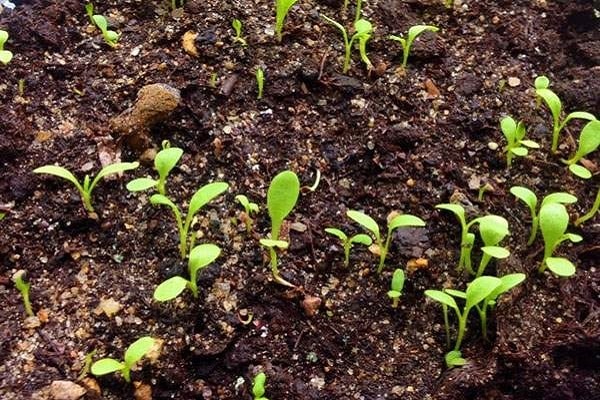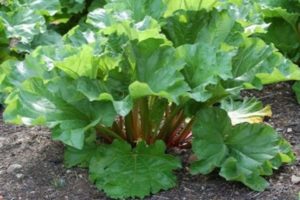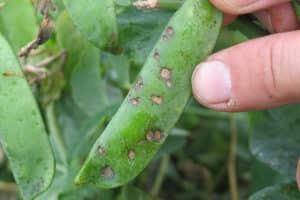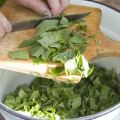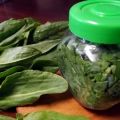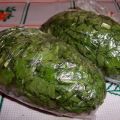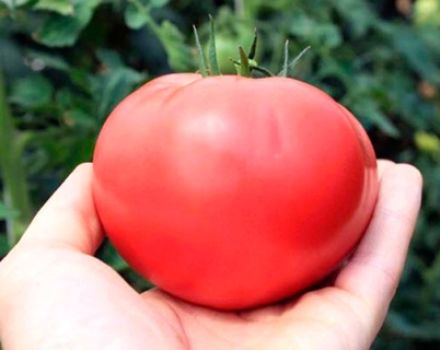How to plant sorrel and care for it in the open field, how to feed it after cutting
For many years, sorrel did not attract much attention from vegetable growers and was known as a wild plant. Today it has taken its rightful place among cultivated plants in our personal plots, because it has many valuable qualities. This is one of the first plants that gives tender leaves, rich in nutrients in spring. And given that planting and caring for sorrel in the open field does not cause much trouble, its cultivation is considered the easiest.
Features and characteristics of the plant
Sour sorrel was introduced into the culture, it is also garden or ordinary (Rúmex acetósa), which belongs to herbaceous perennials from the buckwheat family. Forms a basal rosette of ovoid-oblong leaves, pointed at the end. Refers to monoecious plants with cross-pollination. It has a stem, branched root that penetrates deep into the soil.
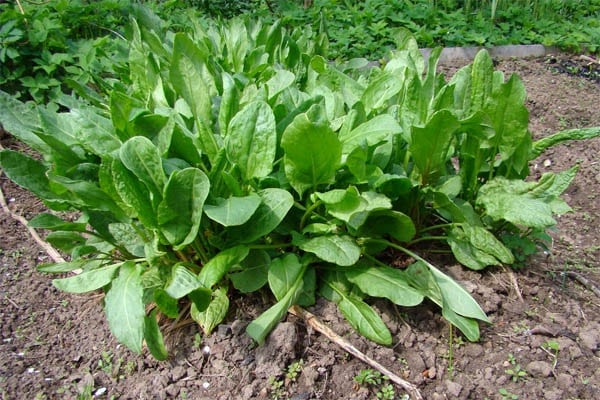
When flowering, sorrel throws out a flower stem up to 70 cm with small, reddish-yellow flowers, collected in a panicle inflorescence. The seeds are formed in the second year after sowing and are small triangular nuts. They ripen in late summer and are suitable for breeding.
Due to its high frost resistance, it feels great in the northern latitudes, where it winters well and gives green vitamin products in early spring. Even return frosts and temporary cold snaps are not terrible for him. Seeds are able to sprout as soon as the soil thaws, but the best germination energy is observed in warmed, moist soil.
Thanks to its unpretentiousness, the cultivation technique is quite simple. As with growing any vegetable crop, there are nuances, features and certain requirements that a plant makes for good growth.
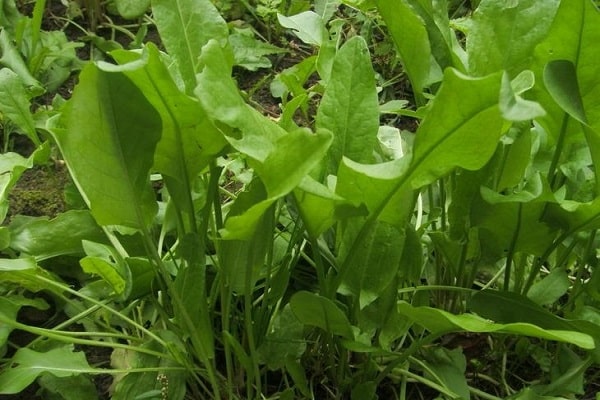
Popular sorrel varieties
Breeders worked on this green crop and thanks to them varieties and varieties of sour sorrel were born, such as:

- Belleville - refers to medium early varieties. It has a raised and spreading rosette of leaves. Leaves grow on thick stalks of medium length. They are distinguished by their larger size, light green color and pleasant, slightly acidic taste. The variety is resistant to stemming and frost.
- Malachite - represents a group of mid-early varieties: the time interval from germination to cutting is 45-50 days.The leaves are arranged on long petioles. They are elongated, spear-shaped, with wavy edges. They are distinguished by a slight sourness.
- Broadleaf is an early ripening variety. The first harvest can be obtained 40 days after planting. The leaf blade is ovoid, from medium to large. Differs in delicate, juicy leaves of medium acid taste. It has a high yield and is resistant to shooting.
- Odessa-17 - bred as an early maturing variety. It has a raised and spreading rosette with elongated, oval leaves. One of the drought-resistant varieties that tolerates short-term lack of moisture well.
- Spinach is a representative of medium early varieties with large leaves. It is distinguished by an erect and loose rosette, on which dark green, slightly bubbly leaves are located. They have a slightly sour taste and are rich in vitamin C.
In Europe, the subalpine species is popular, which grows well on rocky hills. In SSL we love nodule sorrel, which has stalks as food. In the Caucasus, sorrel is grown, for which roots are used as food.
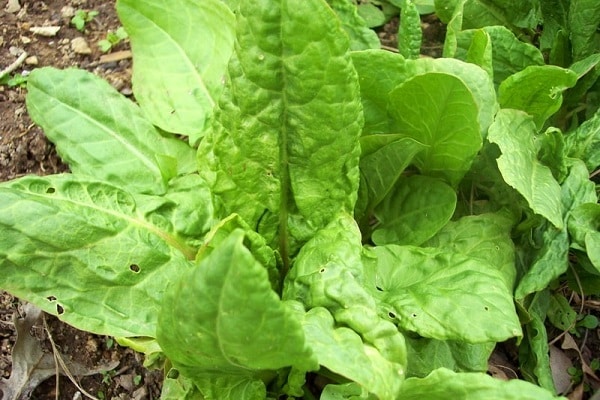
Sorrel planting dates
Based on when the owner wants to get a harvest of green products, the sowing time is chosen. The seedling method when growing sorrel is not needed, since the seeds germinate well even in unheated soil.
The following sowing dates are most optimal:
- Early spring, as soon as the first snow melts. In summer, young seedlings will get stronger, gain strength, and by autumn the first harvest of green leaves can be harvested.
- In early July, when the early harvest of radishes and salads is harvested. Over the remaining summer period, the plant will take root and get stronger, and after winter it will actively grow.
- Sowing in the fall before winter is carried out when the first frosts began and the warm days ended, so that the seeds did not have time to germinate, but simply overwintered in the ground. Active growth will begin in early spring, and by mid-summer it will be possible to cut the first leaves.
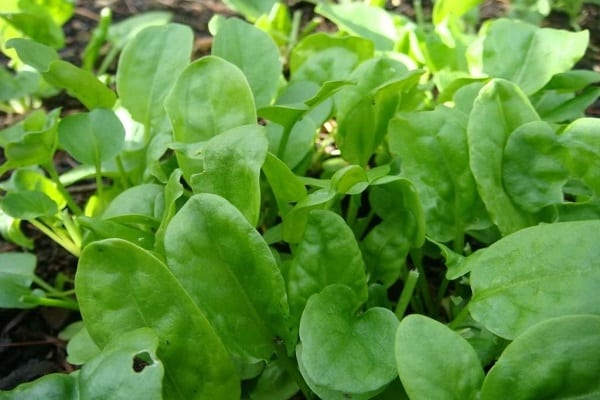
When planting in summer, regular watering is important so that delicate seedlings do not dry out. And adult plants with a lack of moisture go to the arrow and begin to bloom, forming a shallow leaf rosette.
There is an unusual way to harvest full leaves in early spring. The rhizomes are dug up in the fall, the leaves are cut off and left in the basement dug in the sand. In early spring, they are planted in a greenhouse, where the plant is actively growing. In a month, the leaves for the green borsch are ready.
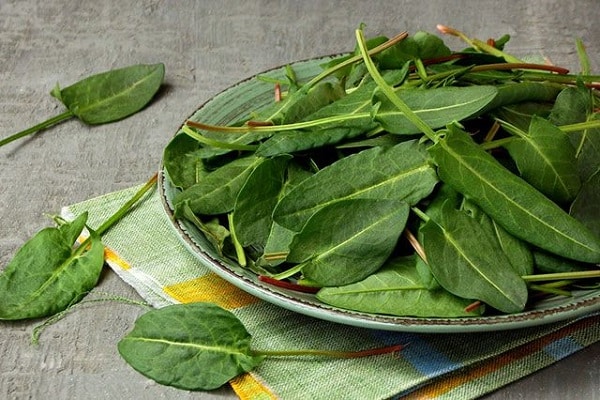
Growing sorrel in the open field
Before the seeds fall into the ground, you must first soak them for a couple of days. After being saturated with moisture, they will give 100% germination. At the dacha, you need to prepare a site in advance for planting. It should be remembered that sorrel is a perennial culture and a small sprout in a few years will turn into a large spreading plant. To grow Rúmex acetósa, choose a slightly shaded and spacious area.
Choosing a place and soil for sorrel
It is better to choose a site and prepare it in the fall, by conducting traditional events:
- alignment of the place;
- cleaning of weeds;
- digging.
Sorrel prefers moderate shade and slightly acidic soil. Grows well on loamy and sandy loam soils. He loves moisture, but its content should be moderate, so a site is selected where there is no closely located groundwater.
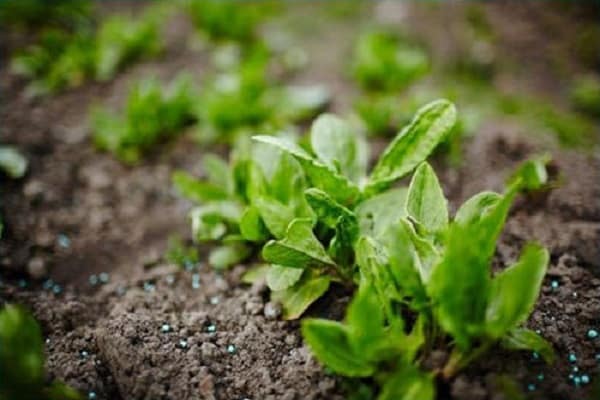
Soil preparation
Since the culture will grow in one place for several years, it is advisable to enrich the soil with nutrients:
- add compost or humus;
- in impoverished areas - complex fertilizers;
- 1-2 weeks before sowing - nitrogen.
Sorrel will grow on any soil, but it forms a tough or shallow rosette of leaves, and may start early flowering. At the same time, the quality of green products will be significantly affected. You can avoid this by knowing how to nourish the soil with useful substances.
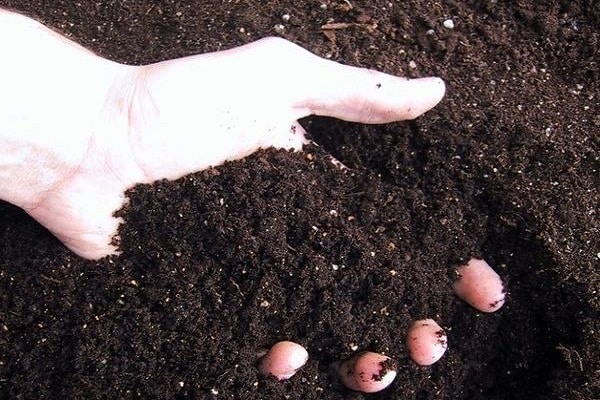
Sowing sorrel
Even a lazy vegetable grower knows how to plant the seeds of a green culture. A few simple tricks and the goal is achieved:
- On the eve of sowing, the soil in the garden must be watered abundantly. You can wet the rows just before planting.
- The garden bed is prepared in a few days so that the soil has time to settle and the seeds do not end up deep in the soil in the loose soil.
- The planting depth is no more than 1 cm.After the emergence of seedlings, it is imperative to thin them out, leaving a distance between the plants of 2-3 cm.A year later, having collected the next crop, carry out another thinning, placing Rúmex every 10 cm.
After sowing the beds, it is best to lightly mulch with peat and cover with foil. In this case, seedlings will appear twice as fast - after 5-7 days.
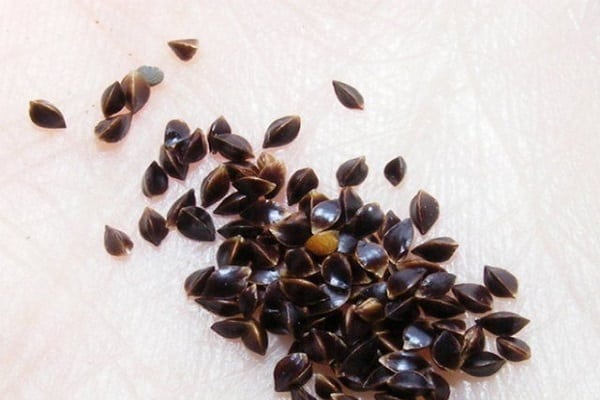
Why doesn't the sorrel sprout?
How to explain the reluctance of an unpretentious leaf culture to be born? Seed germination is usually good, they hatch even under the most unfavorable conditions. The most common cause is deep-seeding where the nutrient reserves of the seed are insufficient to allow the sprout to emerge. If the soil is too loose and subsequent watering, the seeds can also go deeper.

Can sorrel be transplanted?
How to transplant an adult sorrel bush? This is easy to do, given that he practically does not get sick during this procedure. Need to:
- prepare a place suitable for the growth of green culture;
- choose sturdy plants;
- cut off the largest leaves without touching the buds;
- cut the long root slightly;
- transplant to a new location.
The best time for transplanting is a warm autumn day, so that before the frost the plant gets stronger and takes root in a new place.

Sorrel care rules
The methods of care are traditional and include all the main agrotechnical measures: watering, loosening, mulching, feeding. Having figured out how to properly care for a plant, from seedlings to an adult plant, you can get down to business and still get tasty green leaves all summer.
Regularity of watering
The soil should be kept moist at all times, but it is especially important to keep this hydrated while the plants are young. It is in the initial period of growth that they need a lot of moisture. Watering is carried out as needed. If the summer is rainy, then one watering per week is enough. During dry periods, water is required daily.
If the ground is dry, then the sorrel can throw out the flower arrow in the first year of growth. In this case, all the forces of the plant go to flowering, and not to the formation of green mass. During growth, peduncles must be removed.
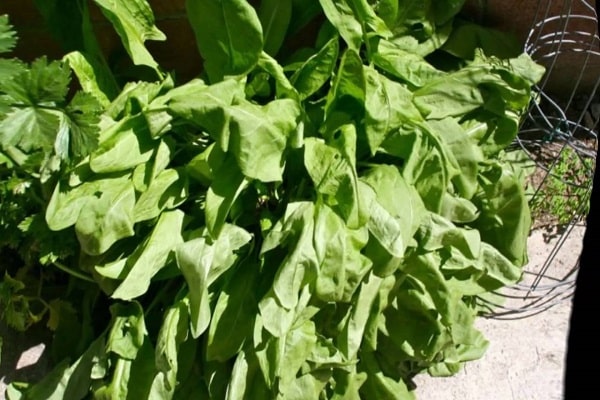
Weeding and loosening
Weed vegetation clogs bushes, which stretch out, lose color and taste. It is easy to get rid of them, carefully weeding out the rows every two weeks. Loosening is also a mandatory procedure that helps to get rid of the soil crust that moisture and air had access to the roots.
You can loosen it to a considerable depth (for adult bushes), since the root system lies deep. During the season, it is enough to loosen the ground 3-4 times.
Mulching and fertilization
It is advisable to mulch the soil in early spring when the first green leaves appear. It is preferable to use peat chips as mulch. This way the soil will retain moisture for longer and remain loose.

How to fertilize sorrel so that tender, juicy greens will delight the whole season? Three dressings are carried out per season:
- In the springtime, mullein infusion (1: 6) and complex fertilizer with potassium and phosphorus in the composition (according to the instructions).
- In summer, nitrogen is introduced, which promotes the growth of green mass.
- In the fall, the aisles are covered with compost or humus, which will add additional nutrition and protect against autumn frosts.
In one place, sorrel grows up to four years, then the bushes should be updated.During this time, the soil is depleted and the leaves become not so tender.
Features of care in the autumn
Knowing how to prepare a green crop for wintering can count on an early harvest after the snow melts. At the end of autumn, the leaves are cut to the ground without touching the buds. The aisles are mulched with humus, peat or compost to protect the plants from freezing. In the autumn-spring period, mulch will help protect the plantings, and in winter they will be covered with snow.

Protection against diseases and pests
Knowing how sorrel can get sick and what pests readily consume it, you can confidently take up the fight, protecting your harvest from "uninvited guests."
Most often, sorrel is affected by:
- Rust is a fungal disease that causes brown spots to appear on the leaves. They merge and the leaf dries up. With a strong defeat, fungicides are used, and with a slight one, they are limited to folk remedies.
- Downy mildew forms a grayish mold (plaque) on the surface of the leaf blade. Phytosporin, which is safe for the human body, helps to solve this problem.
- Shavel leaf gnaw and sawfly caterpillar, which willingly eat up the plant. With their massive accumulation, an infusion of garlic or nightshade helps well.
- Sorrel aphids suck out juices from leaves, which lose their elasticity and become lethargic. Infusions of burning herbs help from it: garlic or dandelion. It is useful to dust the leaves with ash.
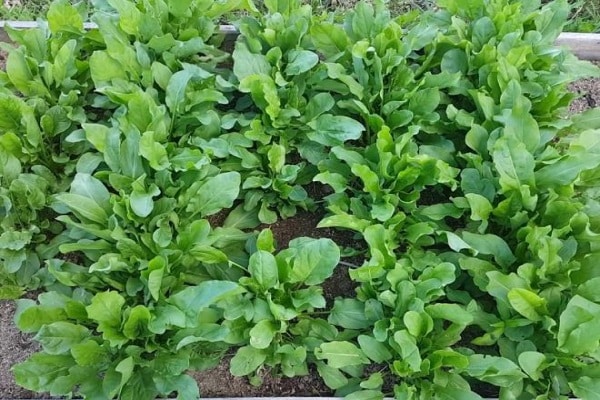
It is better to process useful bushes with natural means so that poisons do not enter the body. The leaves grow back quickly and chemical preparations do not have time to decompose, remaining in the plant.
A solution of soap and garlic is helpful. The solution contains a bar of laundry soap, 3 liters of water and chopped garlic. Spray the leaves with a strained composition or wipe them with a sponge. Watering with clean water is done only after two days.
A mixture of hot pepper, dry mustard, and wood ash helps. Pepper and mustard are taken in 1 tbsp. l., and 1 glass of ash is added. Powder Rúmex with a dry mixture, dealing with most pests. Zhukov is frightened off by a mixture of ash and tobacco dust, but regularity is important here. This procedure is carried out daily for 5 days.
If you promptly clear the site of weeds, observe crop rotation, loosen the ground and monitor the condition of the plant, then pests and diseases of sorrel will not be scary.
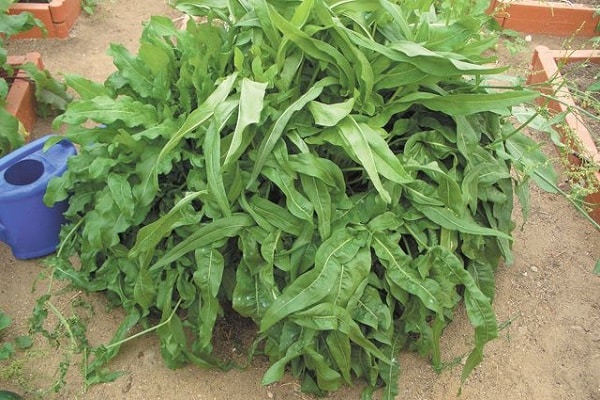
Harvesting and storage of sorrel crops
Leaves must be cut correctly, leaving petioles 3-4 cm long above the soil surface. In this case, it is important not to touch the apical buds of the plant. During the summer, the leaves are cut 3-4 times with an interval of about 20 days.
To obtain high-quality green products, the peduncles are cut off as soon as they appear, otherwise the leaves will form small and tough. If the flower arrows are formed in large quantities, then the cut is stopped.
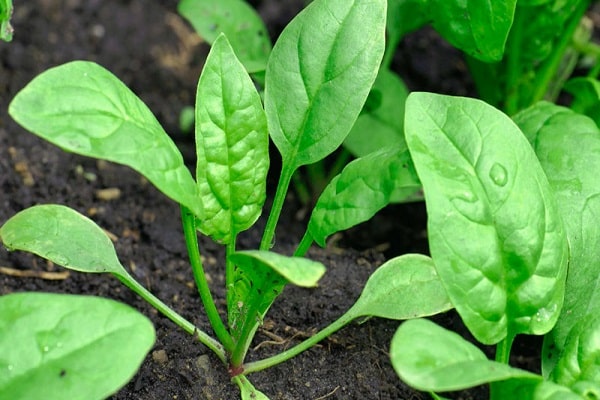
The leaves are well stored in plastic wrap in the refrigerator at a temperature of -1C for up to two weeks. In room conditions, they do not lose their qualities for only 2-3 days. To have greenery all year round, you can grow sorrel as an indoor crop in a flower pot by digging the plant in the fall from your summer cottage.
Not everyone knows how to get sorrel seeds. To do this, cut off the brown inflorescences with half-ripe seeds, make small sheaves of them and let them ripen in a well-ventilated room. The panicles are threshed and the seeds are placed in linen bags for storage. They retain their germination capacity for 2 years.
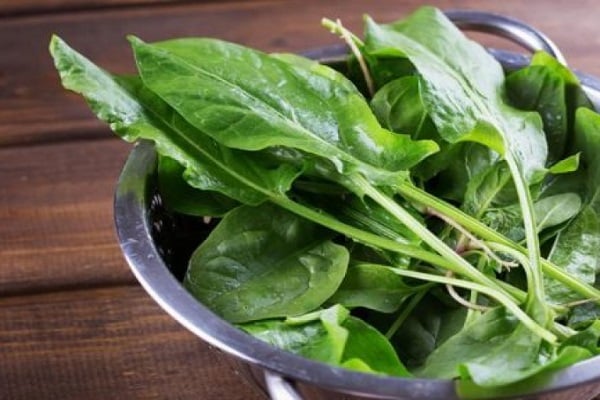
What can be planted after sorrel?
Crop rotation is necessary because pest larvae and disease spores that affect specific crops accumulate in the soil. With a constant planting in one place, say, nightshades, they get sick every year. The same thing happens with other cultures.
Sorrel stands apart in the family of cultivated plants, since only he and rhubarb belong to the buckwheat family.They have their own pests, but some diseases coincide with pumpkin, for example, rust and powdery mildew. Therefore, after sorrel, you can plant any crops, except melons, which can get sick in this area.
Sorrel is a beloved and very undemanding culture. Some vegetable growers do not take care of this plant at all: they planted it and forgot it. Only if necessary, cut the leaves into different dishes. But with proper care, the leaves will be more tender and the harvest will be plentiful.
